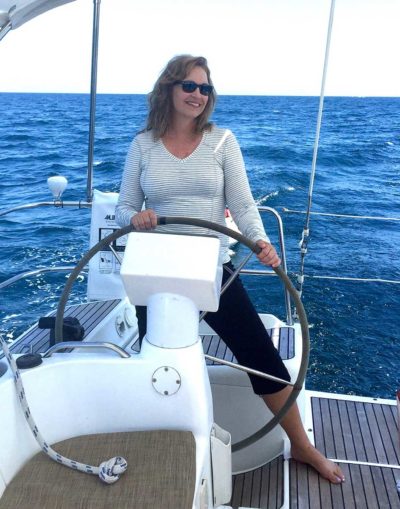
25 Nov What sailing and entrepreneurship have in common
You might call me an accidental entrepreneur. For that matter, you could say I’m an accidental sailor. Both sailing and entrepreneurship came into my life when I least expected them. I learned to sail when I moved to New York City (after all, Manhattan is an island), and became an entrepreneur when my passion for sailing drove me to seek out great sailing gear made just for women. After not finding many good options, I thought “how hard could it be to make women’s sailing gear that is both functional and flattering?” Turns out, it’s a bit harder than I thought. But the end result has been satisfying in ways I never imagined.
What I didn’t realize until recently is how much sailing prepared me to be an entrepreneur. Lessons learned sailing have served me well in my new entrepreneurial life. Here are some of the things sailing and entrepreneurship have in common.
Planning is everything
One of the first things you learn as a sailor is to plan ahead. You learn to take into account the weather, your destination, your crew, and how all of these things can help you achieve your desired goal. A good sailor is well prepared and has a clear goal in mind, with a primary strategy of how to achieve that goal and a contingency plan if Plan A doesn’t work. Without a plan, you just drift wherever the wind takes you – which never turns out well in sailing, or in business. A plan helps you stay focused on your end goal, and provides a guideline for decision making
Improvisation is key
While planning is important, the second thing you learn in sailing (and in entrepreneurship) is that what can go wrong, will go wrong. You have to be able to improvise. Sailors are famous for being able to MacGyver a solution to just about anything. I’ve jury-rigged a sail using a spinnaker pole and zip ties. I didn’t expect the mast slides to fail, but when they did I came up with a solution that let us continue to sail in the right direction. If the wind changes (and it will!), you must adjust your sails to stay on course. It’s the same when starting a business.
Be decisive
One of the traps that’s easy to fall into as an entrepreneur is analysis paralysis. As an entrepreneur, it can be costly. For a sailor, it can be disastrous. Sailing often requires you to make decisions quickly, based on the information available and your gut instinct. In a sailing race for example, you must make tactical decisions in response to your competitors or changing conditions. Waiting too long to make a decision will surely cost you as your competitor takes the inside lane to the mark while you’re still deciding where to tack. It’s the same for entrepreneurship. While details are important, it’s easy to get overwhelmed by all the options. Did you know that there are 243 standard colors of zippers, and that 40 of them are shades of blue? I could easily get bogged down selecting the perfect one. But you soon learn it’s best to go with your instincts and move on to other more critical decisions.
Build a strong crew
No one is good at everything. With much respect to the solo sailors out there, most of the time it’s important to have a diverse team with wide-ranging strengths. You can be a great helmsman but a so-so navigator; therefore you choose a crew member who can plot a good course. It’s the same with entrepreneurship – you should build a team that complements your strengths and shores up your weaknesses. I’m not an expert in garment design, but I’ve been fortunate to find a great pattern-maker who makes sure that our garments fit women’s bodies, and a factory partner who brings our clothing to life with quality workmanship. Without these members of my crew, I’d be stuck in the ideation phase. My crew also includes a fantastic web designer, a product photographer, and a business coach. I’m the captain of this ship, but my crew is there to ensure smooth sailing.
Learn from everyone
Some of my most important lessons learned in sailing have come from the least expected places. If you’re open to it, you can learn something from almost anyone. A grizzled fisherman once showed me how to see the current changing by looking at patterns on the water. While racing, a bow person taught me how to rotate the spinnaker during the gybe to keep the kite full and square. It’s the same in business. It’s not always an official teacher or mentor who can impart important lessons. A seamstress in our factory suggested a pattern change that made one of our styles much easier to sew. Customers have provided input for some of our best product tweaks and innovations. If you can keep your mind and ears open, good ideas and learnings come your way.
There are so many parallels between sailing and entrepreneurship; these are just a few that I’ve learned over the last few years. Perhaps sailing should be a pre-requisite for those considering becoming an entrepreneur – if you can learn to be a competent sailor, you’ll have many of the skills needed to start a business. As the British naval officer and novelist Nicholas Monsarrat said, “Sailors, with their built in sense of order, service and discipline, should really be running the world.” I don’t think that would be a bad thing at all.

Julie Hylton is a sailor and founder of 12° West, the only sailing brand designed by women, for women, and made in the USA. Here she’s wearing the Saybrook Stripe Shirt in Navy/White.
